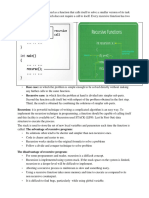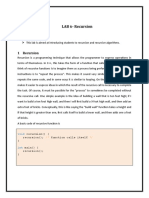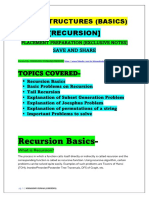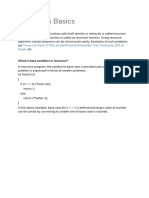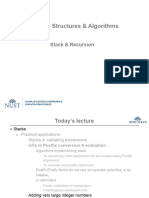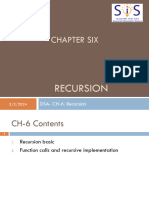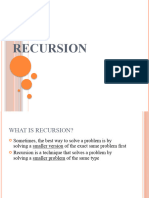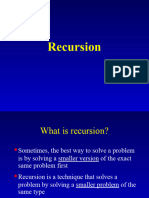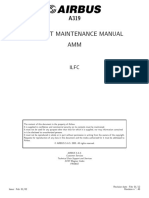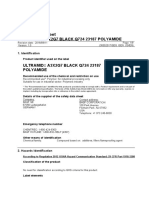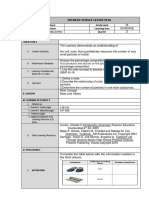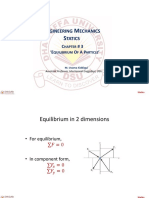0% found this document useful (0 votes)
22 views29 pagesLecture No.08 - Recursion
The document provides an overview of recursion in programming, particularly in C++, explaining concepts such as recursive calls, base cases, and general cases. It discusses the recursive algorithm, its advantages, limitations, and how recursion works with examples like the power and factorial functions. Additionally, it covers topics like tail recursion, indirect recursion, and the Tower of Hanoi problem, emphasizing the importance of understanding the runtime stack during recursion.
Uploaded by
taqiCopyright
© © All Rights Reserved
We take content rights seriously. If you suspect this is your content, claim it here.
Available Formats
Download as PPTX, PDF, TXT or read online on Scribd
0% found this document useful (0 votes)
22 views29 pagesLecture No.08 - Recursion
The document provides an overview of recursion in programming, particularly in C++, explaining concepts such as recursive calls, base cases, and general cases. It discusses the recursive algorithm, its advantages, limitations, and how recursion works with examples like the power and factorial functions. Additionally, it covers topics like tail recursion, indirect recursion, and the Tower of Hanoi problem, emphasizing the importance of understanding the runtime stack during recursion.
Uploaded by
taqiCopyright
© © All Rights Reserved
We take content rights seriously. If you suspect this is your content, claim it here.
Available Formats
Download as PPTX, PDF, TXT or read online on Scribd
/ 29










